Is Hoi An a Tourist Trap or Vietnam’s Best Town?
This post may contain affiliate links. If you make a purchase using one of these links, I may receive a small reward at no extra cost to you. See my Disclosure Policy for more information.
Hoi An is kind of like that one friend who everyone thinks is cool, but you know they’ve gotten a bit too popular for their own good.
On one hand, it’s undeniably beautiful – a well-preserved ancient town with colorful historic buildings, charming photo spots, unique food, and that quiet pretty river that splits it in two.

But with popularity comes… crowds, souvenirs on every corner, pestering vendors, and their scammy practices. So, yeah, Hoi An has elements that might feel a bit “tourist trap-y,” but it’s got enough heart that I still find it worth the visit.
So, is Hoi An a tourist trap? It’s a bit of a yes and no. It might feel that way in spots, but if you approach it with an open mind (and the necessary patience), you’ll likely come away thinking it’s an experience worth having. Hence why travelers are so polarized on the topic.
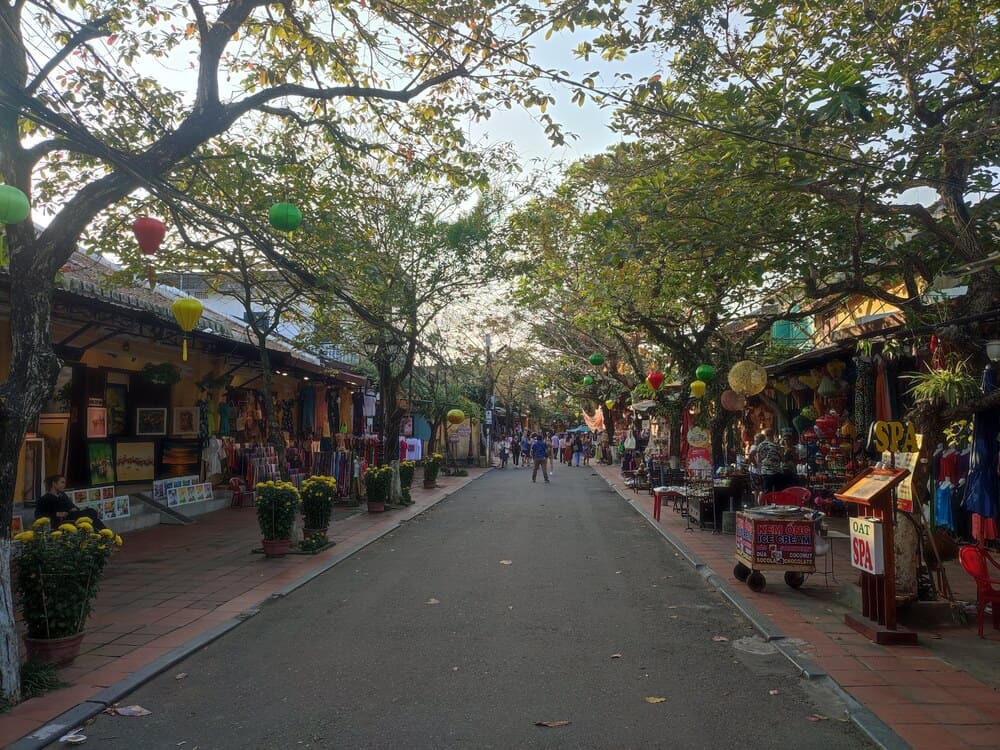
Hoi An is part of my 1 month Vietnam backpacking itinerary.
What is a “tourist trap” and is Hoi An one?
A tourist trap is a popular attraction or location designed primarily to lure tourists and profit from them, often with overpriced goods, services, or entry fees.
These spots tend to be crowded, overly commercialized, and may lack authentic local culture, focusing more on gimmicks than genuine experiences.
With this definition in mind, Hoi An ticks only half the boxes. It’s a UNESCO heritage site with undisputable historic and cultural value. It was not artificially created just for tourism.
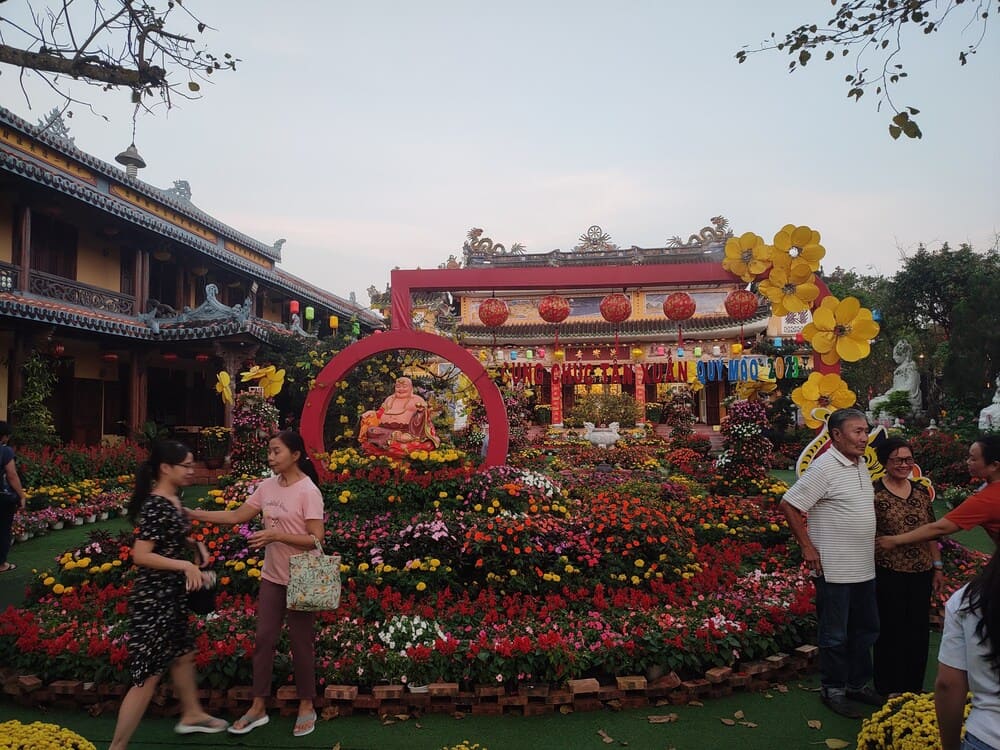
However, Hoi An is indeed crowded, and unsavory attempts to squeeze tourists of all their dongs lurk around every corner.
Tourist trap – maybe not. But it may very well become one within the next few years if it doesn’t keep overtourism in check.
Pros and cons of visiting Hoi An
I’ve been to Hoi An twice and the following breakdown is based on my experiences but also on reports from other travelers I’ve spoken to.
As you may have figured out by now – I like Hoi An (it’s an unskippable stop on my 30-day Vietnam backpacking itinerary) but I am not a raving fan.
Hoi An is uniquely charming…
Most of Vietnam’s cities are very similar to one another.
The population has more than doubled since the end of the Vietnam War (“The Resistance War against America“) so cities expanded. Moreover, the communist party in Vietnam standardized construction, including layout, organization, colors, and features.
Thus, most cities in Vietnam lack a unique character and are hardly different from one another.
Hoi An, having been badly damaged in the war, was almost rebuilt in the utilitarian style of the 1980s socialist zeitgeist. Almost.
Without going into too much detail, an architect with a big heart recognized Hoi An’s potential and stepped in to restore and protect its heritage. His name was Kazimierz Kwiatkowski. You can find his statue in the center of Hoi An.
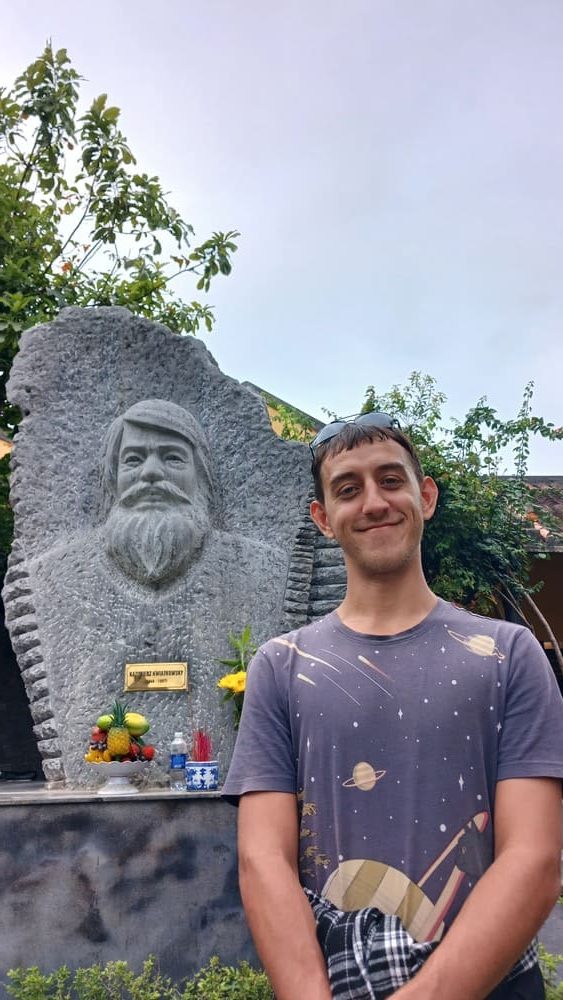
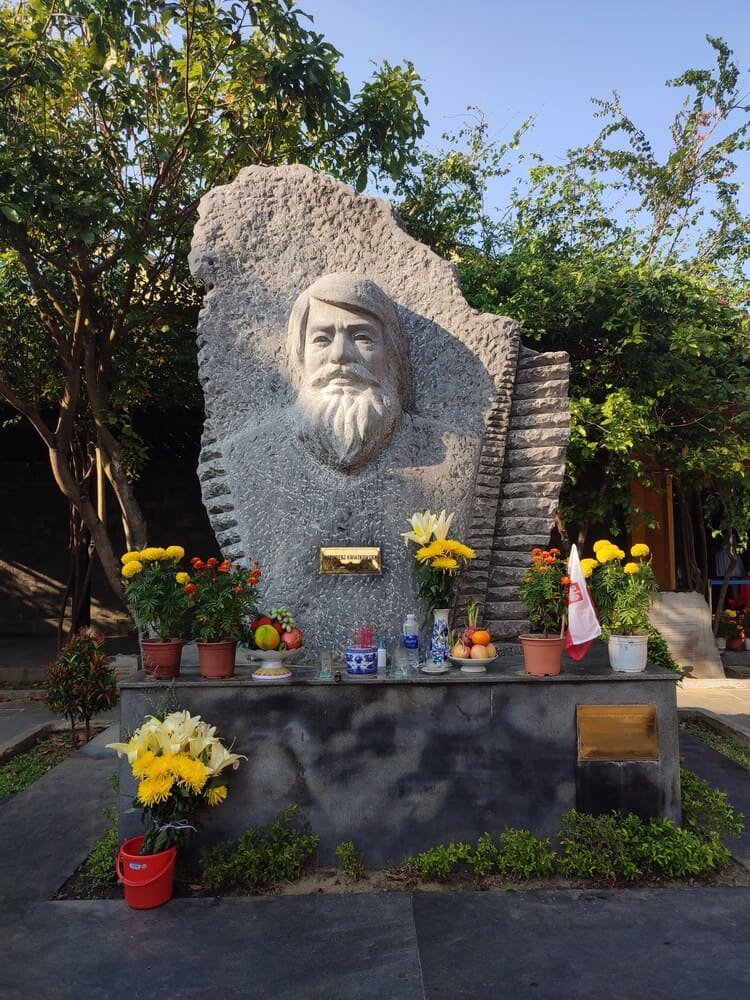
Had it not been for him, Hoi An would today be just another standardized Vietnamese town.
Instead, it’s a truly charming town! A UNESCO World Heritage site since 1999, with well-preserved historical architecture. The streets showcase a unique blend of Vietnamese, Chinese, and Japanese influences in the town’s buildings, and you can get a real sense of the region’s history.
No other place in Vietnam is like Hoi An, not even remotely similar.
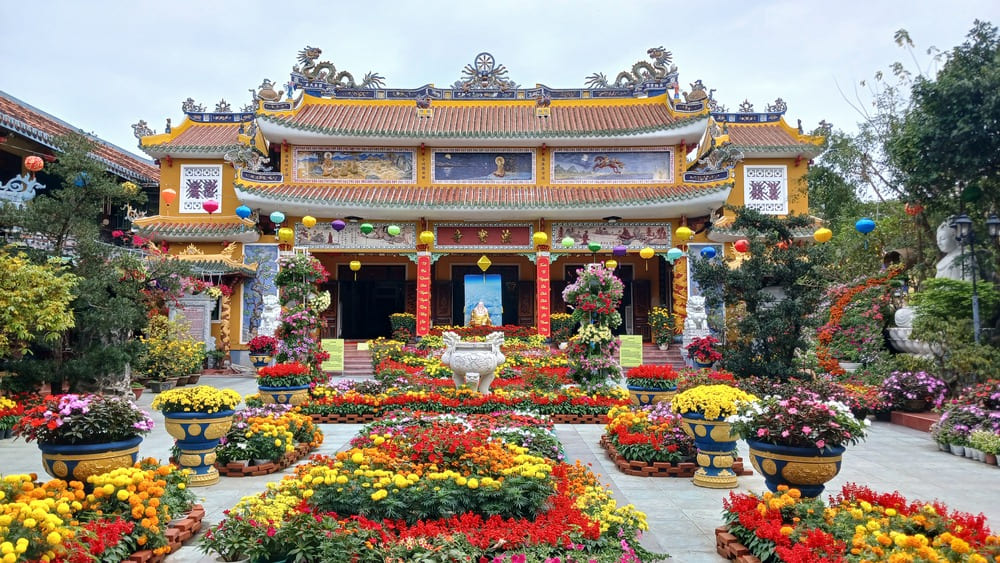
…but also gets ridiculously crowded
Hoi An’s Ancient Town gets very busy all throughout the day as tour buses continuously bring tour groups on day trips to explore the preserved but narrow streets.
It gets so crowded in the evening when the famous lanterns are released in the river. The streets of Hoi An are just too small for the sheer number of people – it feels packed, overwhelming.
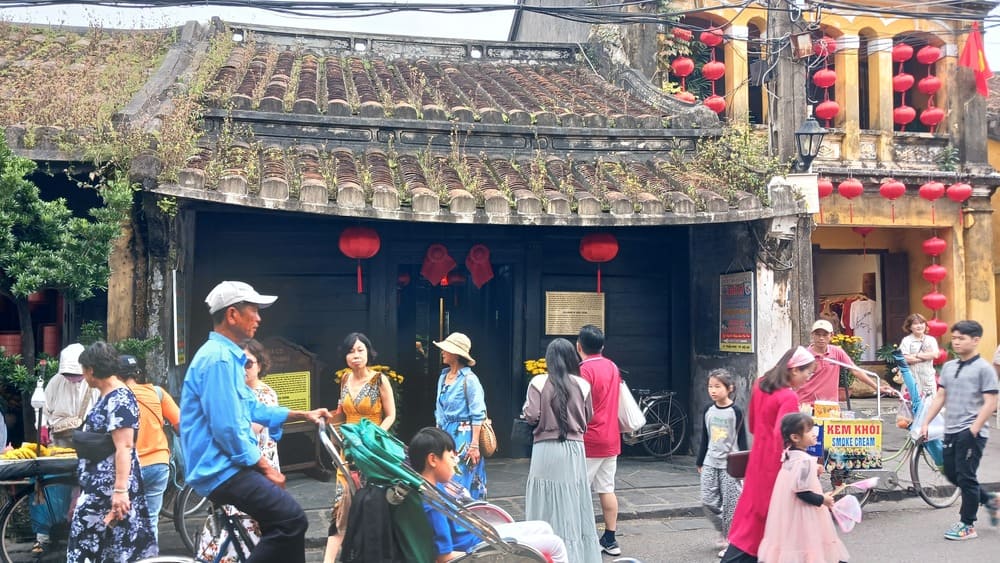
Other places in Vietnam also suffer from overcrowding but because Hoi An is so small and the preserved area is concentrated within just a few streets, it is perhaps the worst (or best?) example of overtourism in Vietnam.
Hoi An is culturally rich…
Hoi An was an international trading port between the 15th and 19th centuries, when traders from Japan, China, and Europe stopped there to exchange goods.
Former international ports tend to become important historical sites, rich in multiculturalism and blending many influences. Think of Malacca in Malaysia, Zanzibar in Tanzania, Venice in Italy, and Alexandria in Egypt.
Hoi An is up there with the other heavyweight international ports. Its rich culture is visible today in the architecture, food, and traditions of the city.
Architecture
After hyping it up so much, it’s only proper to mention some of the must-see buildings in Hoi An:
- The Japanese Covered Bridge (recently renovated)
- Assembly Hall of the Fujian Chinese Congregation
- Tan Ky Old House
- Quan Cong Temple
- Cantonese Assembly Hall
- Chua Ong Pagoda
There are info boards at the entrances and inside them, explaining the building’s history and significance, so I will spare you the details of when how, and why they were built.
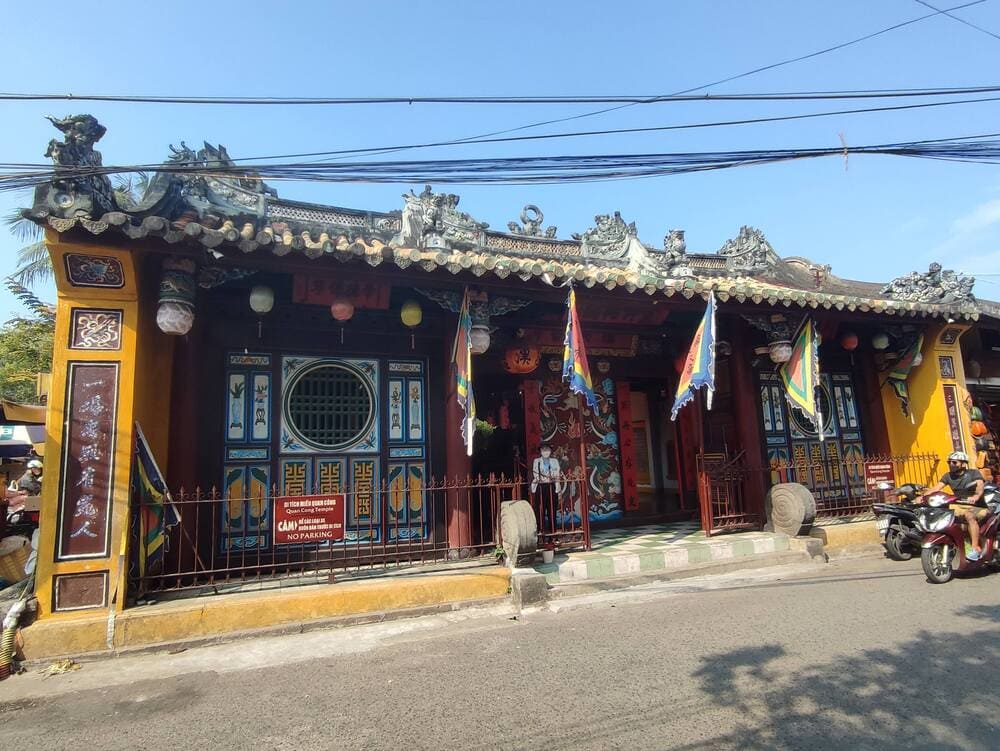
It’s worth noting here that you technically have to pay an entrance fee of 120.000 VND (~5 USD) to enter the Ancient Town but it’s never enforced. However, to enter any of those historic buildings, you must show your ticket.
The ticket only allows you to enter 5 buildings out of the 22 in total. So if you’re a massive history and architecture fan, this may seem a bit stupid as you will need to buy another ticket. I feel you, though I don’t think this automatically makes Hoi An a tourist trap.
You can also join a walking tour to take you to some of the more hidden places in Hoi An.
Crafts
Hoi An is also famous for its traditional crafts, such as:
To experience this part of the culture, you can join a class to learn the basics of the craft and create something pretty. Click on the links above to explore the best such tours.
Cuisine

Hoi An has some specific meals that you will struggle to find elsewhere in Vietnam. The three that come to mind are:
- Cao Lầu: thick, chewy noodles, tender slices of pork, fresh greens, and crunchy croutons. Said to be prepared only with water from Hoi An’s oldest well, which gives it a distinct uncopyable flavor.
- Mi Quang: turmeric-infused rice noodles topped with shrimp, pork, peanuts, and fresh herbs.
- White Rose Dumplings: delicate, translucent dumplings filled with shrimp or pork and shaped like a blooming (white) rose.
Now the bad news – finding quality food may be difficult for the same reasons I outlined in the tailor shops problem above – too much supply dilutes the really superb places.
I duly liked the food in the vendor section of Hoi An Central Market. It felt quite authentic and the flavors satisfyingly pleasant. It was also quite cheap, especially compared to the riverfront restaurants that charge double for mediocre taste.
Alternatively, you can learn how to cook something Vietnamese by signing up for a cooking class with a local Vietnamese Chef.
…but suffers from overcommercialization
All that marvelous culture is at risk of being slowly washed away as Hoi An receives more and more tourists every month.
It’s easy to blame tourists, i.e. us, for this. True, tourists are a culprit but I will take a different stance and blame the local industry.
Everyone is aggressively selling. You can easily feel like a walking wallet to them.
“Buy, buy, buy, buy…”. The mango soft cake vendors, the paper birds, the fried snacks, the tacky souvenirs, the postcards, and the silk scarves.
You will never be left alone, in peace, to explore leisurely. Yes, the locals make their living through tourism but they would be selling just the same if they wait to be approached instead of approaching indiscriminately.
Everything in Hoi An is about spending money, buying things, handing over your cash. That still doesn’t make Hoi An a tourist trap in my books (at least according to the definition) but it sure is an unpleasant part of visiting it.
You can get bespoke clothing made cheaply…
Hoi An is famous for its tailoring industry. Tailor shops spread around the Ancient Town offer custom-made clothing at reasonable prices.
Some sources say that Hoi An has the most tailors per capita in the entire world. You know what? They are probably right – it seems to me like tailor shops make up a third of the real estate in Hoi An!
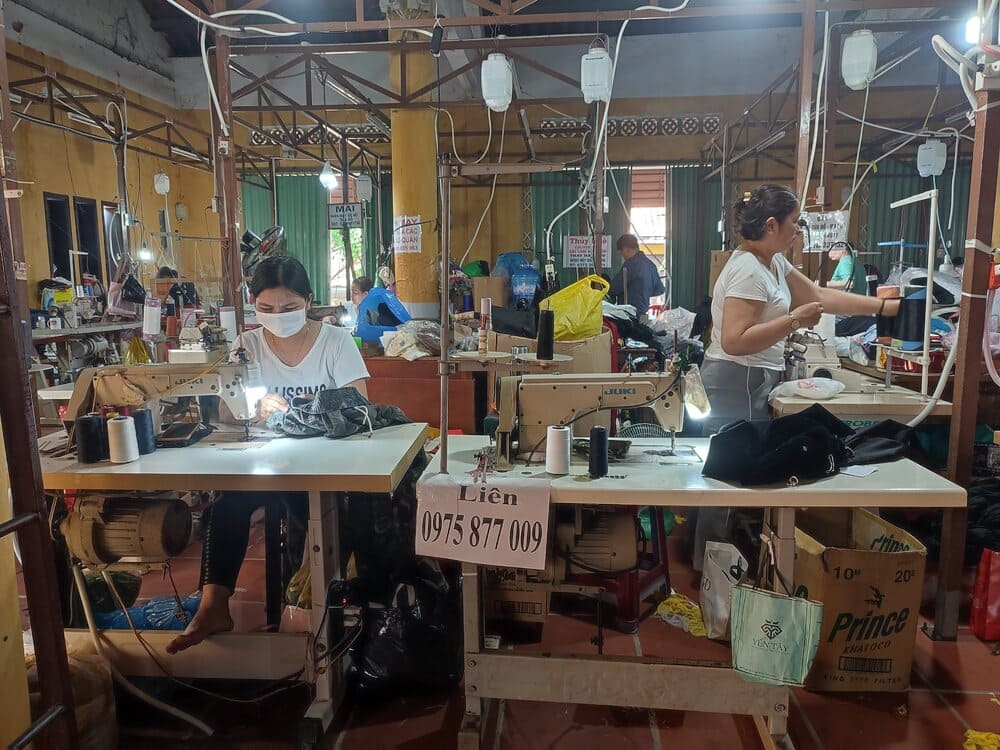
All of this is to say that if you want anything custom-made for you at affordable prices, Hoi An is the place to go.
…but you can never be certain of the quality
Do you really think that all those tailors offer top-notch quality? No way.
Some of them are stellar, some just okay, some subpar, and some will outright scam you.
This is Vietnam – you must expect scams. It’s one of the reasons for my love-hate relationship with Vietnam.
Here are a few of the known ways how tailor shops will swindle you:
- Bait-and-switch: You go in, they show you some high-quality fabric samples, you are sold and order something. You go to receive the garment a few days later and find out (or not) that they have switched to cheaper materials.
- Low-quality stitching: Because tourists expect their new clothes will be made in a day, max 2, tailors often rush the sewing work. This results in poor construction that could fall apart after just a few wears.
- Fake reviews and recommendations: This is a very Vietnamese tourism thing – hotels also have thousands of fake reviews. Tailor shops in Hoi An too – many shops hire people to leave glowing online reviews or even incentivize guides to recommend them. Research trusted tailors ahead of time and don’t rely solely on local recommendations. Unfortunately, I cannot recommend any tailor in Hoi An.
- High prices with “discounts”: You are a foreigner – expect the foreigners’ price. Most shops will first quote you a very inflated price, which you must counter by bargaining. They will then offer discounts to make you think you’re getting a deal. While not a scam per se, you will always overpay – it’s just a matter of how much.
And if the tailor is not out to scam you, you may still receive a finished product that is just meh – not fitting, different colors, or just falls short of your expectations.
Is Hoi An worth visiting?
The question of whether to add Hoi An to your Vietnam itinerary boils down to whether the pros of its unique heritage outweigh the cons of its overtouristic nature.
I believe that Hoi An is the best Vietnam has when it comes to a place of conserved historical value. It’s a charming destination that is slowly being ruined by its popularity.
This means Hoi An may very well simultaneously be Vietnam’s best town AND a borderline tourist trap!
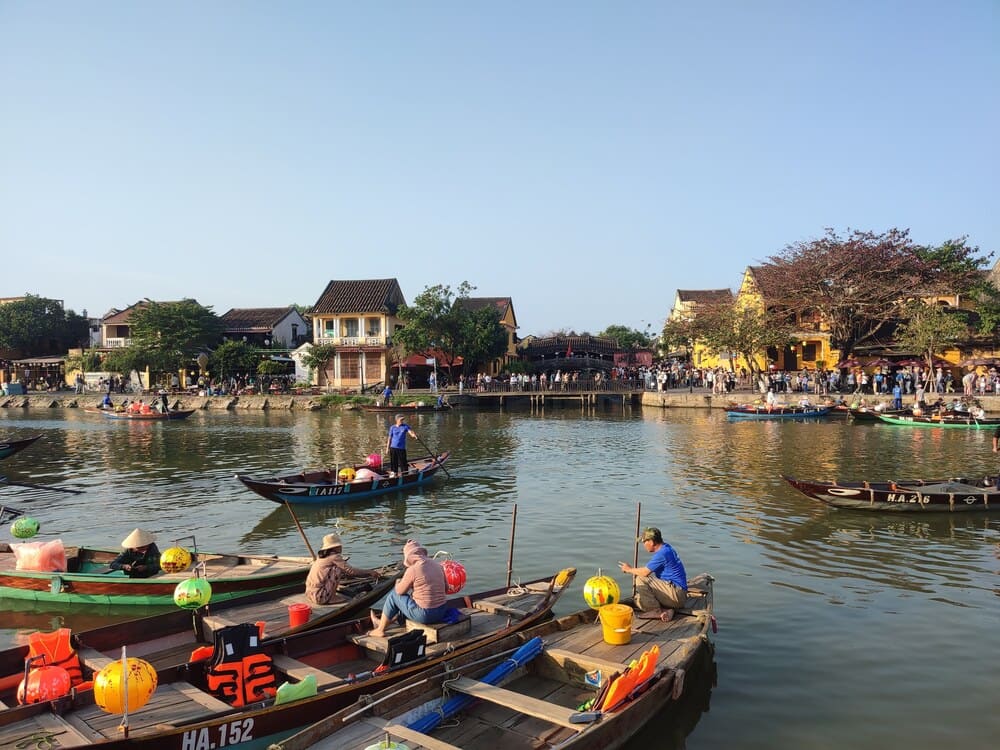
Where to next?
If you haven’t done a short half-day trip to My Son Sanctuary, perhaps add it to your itinerary.
If you’re northbound, consider a stop in Da Nang to watch the famous Dragon Bridge Fire Show. You can continue north via the Hai Van Pass to Hue, the old capital.
If you’re southbound, you can stop at Quy Nhon, Nha Trang, or Mui Ne for a seaside town or Da Lat for a highlands town. You can also skip all of those towns and proceed directly to the biggest but vibrant chaos in Vietnam – Ho Chi Minh City.


